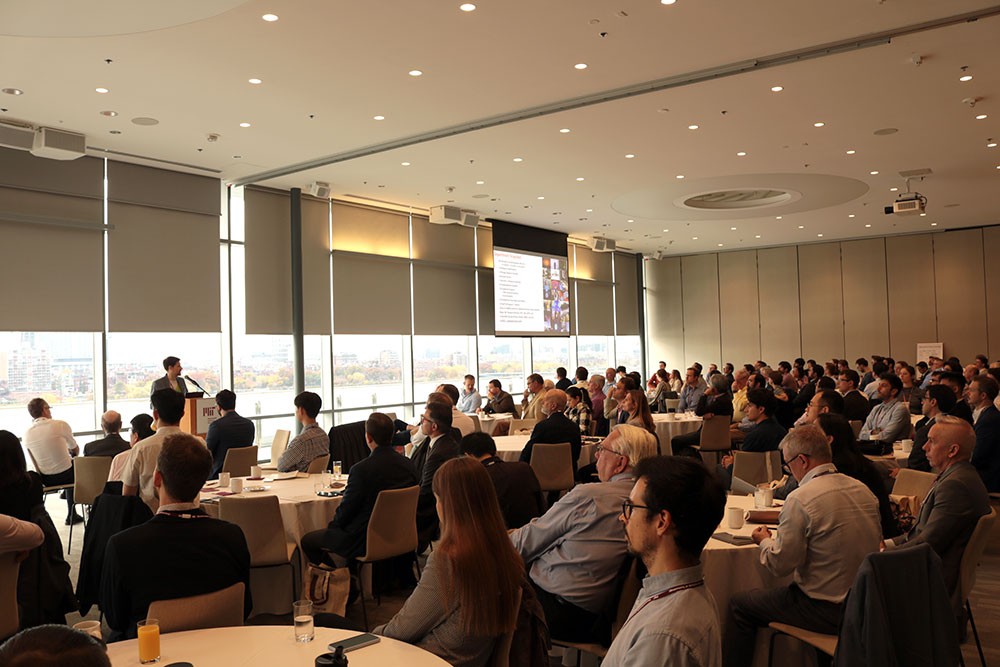3 Questions: Can a nuclear energy challenge stall decarbonization goals?

Intro
The path to meeting U.S. decarbonization goals involves ramping up the production of clean energy. Nuclear is key to these ambitions. The nuclear energy landscape is itself undergoing rapid change, dictated by updated regulations, shifting geopolitical dynamics, and newer promising reactor designs.
Against this backdrop, the nuclear energy sector faces a significant challenge related to the fuel supply chain. And without an adequate supply of nuclear fuel for reactors, the path to decarbonization looks bumpy. To spotlight and design solutions for this problem, MIT and the Center for Advanced Nuclear Energy Systems (CANES) hosted a two-day symposium. The title for the event — No Fuel? No Party — could not be more appropriate. The pressure on fuels is especially intense as advanced reactors are likely to come on board in the near future. But a lack of fuel availability might ground these projects.
Leaders from academia and industry attended the symposium, which included a keynote presentation from Kelvin Henderson from Duke Energy. As senior vice president and chief nuclear officer at the utility, Henderson is responsible for the safe and efficient operation of the nation’s largest regulated nuclear power-generating fleet.
We spoke with Professor Jacopo Buongiorno, the Director of CANES and the Battelle Energy Alliance Professor in Nuclear Engineering at the Massachusetts Institute of Technology (MIT) about the symposium and why he came away concerned but also hopeful about the future of nuclear fuels.
Why are nuclear fuels important for a decarbonized economy?
Nuclear energy is one of few clean energy sources; it does not emit carbon dioxide. So it can help decarbonize the electric grid as well as other sectors of the economy.
Nuclear energy comes from nuclear reactors. And the essential element of a nuclear reactor is the fuel, uranium, a natural element mined from minerals. To be used in a reactor, uranium has to be transformed into the proper chemical-physical form and enrichment level, that is, the concentration of U-235, the uranium isotope used for fuel.
To achieve a decarbonized economy, scientists would like to see advanced reactor technologies be deployed in the United States and elsewhere. But the supply chain for their related fuels is deficient, both in terms of producing the right level of enrichment and the correct chemical-physical form. And that can become a real bottleneck for advanced nuclear technology.
What was the goal of the symposium? Why did you decide to host it?
In the last 10 years, there has been a lot of focus on other challenges associated with nuclear power. The most important one relates to the capital cost of building a new plant, and while we don’t want to lose focus on that, we now also have a fuel challenge, which is underappreciated. The symposium’s goal was to shine a light on this particular challenge. It was titled, “No fuel? No Party!” as a humorous way to point out that if we don’t have fuel, we can’t run a reactor. And if we can’t run a reactor, we can’t have nuclear energy. We need to underscore the importance of fuel cost economics and supply chain issues in enabling the nuclear sector to carry out its mission.
The event clearly resonated with the community. Roughly half of the nearly 150 attendees were from industry or national labs, and we also had academics, energy investors, and environmental NGOs participating. Technical sessions addressed advanced fuels and new emerging technologies. Others related to big-picture U.S. government policies. Our keynote guest speaker from Duke Energy, the largest utility in the United States, talked about the company’s plans for grid decarbonization.
What were the big takeaways?
First, there is indeed a crunch in the supply chain for uranium at the enrichment level that is required for advanced reactors. But the U.S. government is investing to help bring the supply chain up to speed.
Second, advanced reactors require advanced fuels, and related fabrication costs are very high. We discussed a few ways to reduce these costs and avoid the selection of advanced and expensive fuels when possible.
Finally, modeling and simulation experts presented a convincing argument that modern computational tools can dramatically reduce the time and cost required to qualify new nuclear fuels and materials. Usually a new fuel requires a very lengthy testing and licensing process, which can take 15-20 years. Experts predict one can cut that time by half with modern computational tools.
Using modeling and simulation will help professionals move away from shotgun trial-and-error approaches and laser focus on solutions. Even if fuels will still need testing, these tools may dramatically compress the design space and focus on candidates that have a high chance of working.
While fuel-related challenges were the primary focus of the symposium, we emerged hopeful because there is investment and there are ways to reduce the cost. And there are opportunities using modeling simulation to shorten the period for the qualification of new fuels.
November 2024. Written by Poornima Apte. Photo courtesy of MIT CANES
